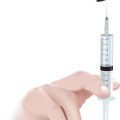Introduction to Thread Lifts in the UK
In recent years, PDO (Polydioxanone) and COG thread lifts have rapidly emerged as sought-after non-surgical anti-ageing treatments across the UK. As the demand for minimally invasive aesthetic procedures continues to rise, British clients are increasingly turning to thread lifts as an effective alternative to traditional facelifts. These innovative treatments utilise dissolvable threads to subtly lift and rejuvenate sagging skin, delivering a refreshed appearance without the need for major surgery or lengthy recovery periods. The evolving landscape of aesthetic medicine in the UK has seen a shift in public perspectives, with more individuals embracing preventative and restorative solutions that offer natural-looking results. Thread lifts, particularly PDO and COG variations, now play a prominent role in meeting these expectations, providing tailored anti-ageing solutions that align with contemporary British beauty standards.
2. What Are PDO and COG Threads?
Polydioxanone (PDO) and COG threads represent innovative, minimally invasive tools in the world of aesthetic medicine, offering British patients a refined alternative to traditional facelifts. Understanding their materials, design, and distinguishing features is essential for anyone considering these anti-ageing treatments.
PDO Threads: Material and Characteristics
PDO threads are composed of polydioxanone, a biocompatible and biodegradable polymer long trusted in surgical sutures across the NHS. Once inserted into the skin, these threads gradually dissolve over six to eight months, stimulating collagen production and providing subtle lifting effects without permanent foreign bodies.
Key Features of PDO Threads
| Aspect | Description |
|---|---|
| Material | Polydioxanone (safe, absorbable) |
| Texture | Smooth or twisted for targeted applications |
| Main Benefit | Collagen stimulation and gentle tightening |
| Dissolution Period | 6-8 months |
| Suitability | Fine lines, early sagging, overall rejuvenation |
COG Threads: Advanced Design for Enhanced Lifting
COG threads are an evolution of PDO technology, featuring barbs or “cogs” along their length. These specialised hooks anchor into subdermal tissue, allowing practitioners to reposition and lift sagging skin more effectively. The design is particularly suited for those seeking pronounced facial contouring—such as along the jawline or cheeks—common concerns among British clients aiming for a refreshed but natural look.
Key Features of COG Threads
| Aspect | Description |
|---|---|
| Material | Mainly polydioxanone; some variations use PLLA or PCL (all CE-marked for UK use) |
| Structure | Barbed/cogged for mechanical lifting effect |
| Main Benefit | Dramatic lifting and support of deeper facial tissues |
| Dissolution Period | Typically 8-12 months (depending on type) |
| Suitability | Moderate to advanced sagging, enhanced definition needs |
PDO vs. COG Threads: Key Distinctions Relevant to British Patients
| Feature | PDO Threads (Smooth) | COG Threads (Barbed) |
|---|---|---|
| Lifting Power | Mild to moderate Best for subtle changes |
Strong Best for visible lift/reshaping |
| Treatment Areas | Crow’s feet, neck lines, mild jowls | Jawline, nasolabial folds, cheeks, heavy jowls |
| Aesthetic Outcome Sought by UK Clients | Naturally refreshed look Minimal downtime preferred in British work culture |
Youthful contours Favoured in social settings valuing subtle enhancement over dramatic change |
| Sensation Post-Treatment | Mild tightness/tenderness temporarily | Sensation of “lift” with minor swelling possible |
The choice between PDO and COG threads ultimately depends on individual ageing patterns and desired outcomes. Both thread types have been rigorously tested for safety within UK clinics and are tailored to meet the cultural preference for understated yet effective anti-ageing results.
![]()
3. The Science: How Thread Lifts Combat Ageing
Thread lifts, particularly those using PDO (Polydioxanone) and COG threads, are rooted in a sophisticated understanding of the ageing process and how to counteract its visible effects. The fundamental science behind these treatments revolves around their ability to trigger biological responses that rejuvenate and support the skin.
Collagen Stimulation: Rebuilding Skin from Within
One of the primary mechanisms by which thread lifts work is through collagen stimulation. As we age, collagen production slows, leading to sagging, fine lines, and reduced elasticity—a concern commonly reported by UK clients. When PDO or COG threads are strategically inserted into the skin, they act as a gentle injury, prompting the body’s natural healing response. This process encourages fibroblasts to ramp up collagen synthesis around the threads, gradually restoring volume and firmness over several months.
Tissue Support and Immediate Lift
The unique barbed structure of COG threads offers an immediate mechanical lift by anchoring and repositioning soft tissues. This provides instant support in areas like the jawline, cheeks, or neck—popular treatment zones for British patients seeking subtle yet noticeable improvement without surgical intervention. Simultaneously, PDO threads offer a scaffolding effect that subtly tightens skin while supporting underlying tissues as new collagen forms.
Addressing Common Signs of Ageing in UK Clients
Typical signs of ageing such as jowling, nasolabial folds, and drooping brows are effectively targeted through this dual action. The combination of immediate tissue repositioning with progressive collagen induction means results look natural and refined—qualities highly valued in the UK aesthetic landscape. Furthermore, because thread lifts work with the body’s own biology rather than against it, outcomes blend seamlessly with one’s natural features while gradually enhancing youthful contours.
4. Procedure Insights: What to Expect Before and After
Undergoing PDO or COG thread lifts in the UK is a medically regulated process, ensuring that safety and patient satisfaction are prioritised at every step. Understanding what to expect before, during, and after your thread lift can significantly enhance comfort and results. Here’s a comprehensive overview of the procedure journey, tailored to UK standards.
Pre-Procedure Consultation Standards in the UK
The first essential step is an in-depth consultation with a GMC-registered practitioner or a qualified aesthetic nurse. During this session, your medical history, expectations, and suitability for PDO or COG threads will be thoroughly assessed. The practitioner will discuss the science behind the treatment, potential risks, and expected outcomes. A tailored plan will be developed to match your facial anatomy and anti-ageing goals. Informed consent is obtained, and pre-procedure instructions—such as avoiding blood-thinning medications and alcohol—are provided.
Typical Patient Experiences on the Day
On the day of your thread lift, you can expect a clinical yet reassuring environment. After facial cleansing, a topical anaesthetic cream or local anaesthesia is applied to ensure comfort throughout the procedure. The threads are strategically inserted using fine needles or cannulas into targeted subdermal areas. Most patients describe sensations of mild tugging or pressure rather than pain. The entire process generally lasts between 30 to 60 minutes, depending on the number of threads and complexity of the lift.
Recovery Times & Expected Timeline
| Timeframe | What to Expect |
|---|---|
| Immediately Post-Procedure | Mild swelling, redness, or bruising; tightness may be felt; visible improvement in facial contours. |
| First 24-48 Hours | Minor discomfort; advised to avoid strenuous activity; sleeping with head elevated recommended. |
| 1 Week | Most swelling and bruising subside; skin begins adapting to new contours. |
| 2-4 Weeks | Collagen stimulation starts; subtle tightening continues; final results become more apparent. |
| 3-6 Months | Full collagen regeneration; optimal lifting effect maintained as threads naturally dissolve. |
Aftercare Practices for Safety & Optimal Results
- Avoid excessive facial movements: Refrain from heavy chewing, dental work, or vigorous exercise for at least one week post-procedure.
- No makeup for 24 hours: This minimises infection risk at insertion sites.
- Gentle skincare: Use mild cleansers and moisturisers; avoid exfoliation for two weeks.
- Pain management: Paracetamol may be taken if needed—avoid NSAIDs unless prescribed by your practitioner.
- Follow-up appointments: Schedule any recommended reviews with your clinician to monitor progress and address queries promptly.
The British approach emphasises transparent communication, evidence-based practice, and continuous aftercare support to ensure both patient safety and satisfaction throughout the thread lift experience.
5. Benefits and Limitations: A Balanced View
When considering PDO and COG thread lifts as part of an anti-ageing regimen, it is essential for UK patients to understand both the advantages and the limitations these treatments offer. This balanced perspective ensures realistic expectations and informed decisions.
Realistic Outcomes
PDO and COG thread lifts provide a subtle but noticeable lifting effect, particularly effective in areas such as the cheeks, jawline, neck, and brows. Results are typically natural-looking, offering a refreshed appearance rather than dramatic alteration. As collagen production is stimulated over time, patients may observe further improvement in skin texture and firmness within several months of treatment.
Longevity of Results
The effects of thread lifts are not permanent; results generally last between 12 to 24 months, depending on individual factors such as age, lifestyle, skin quality, and the specific threads used. The body gradually absorbs the threads, but the collagen framework they leave behind can extend the benefits beyond their physical presence. Maintenance treatments may be required to sustain optimal results.
Potential Drawbacks
While thread lifts are minimally invasive compared to surgical options, they are not without potential drawbacks. Some patients may experience temporary swelling, bruising, or mild discomfort at insertion points. Rarely, asymmetry or thread migration can occur, necessitating professional adjustment. Importantly, thread lifts cannot replace the more dramatic results of surgical facelifts or address severe skin laxity.
Considerations for UK Patients
It is vital for individuals in the UK to seek experienced practitioners registered with relevant medical bodies such as the GMC or NMC. A thorough consultation should cover medical history, realistic goals, and possible risks to ensure safety and satisfaction. Moreover, while thread lifts offer quicker recovery than surgery—often allowing a return to normal activities within days—patients must adhere to aftercare advice for optimal healing.
A Transparent Approach
In summary, PDO and COG thread lifts present a compelling option for those seeking subtle rejuvenation without major downtime. However, understanding their limitations alongside their benefits empowers UK patients to make choices that best align with their aesthetic aspirations and lifestyles.
6. PDO & COG Thread Lifts vs. Traditional Solutions
When considering anti-ageing treatments in the UK, patients are often faced with a range of options, each with its unique advantages and considerations. Among the most popular are PDO and COG thread lifts, dermal fillers, and surgical facelifts. Understanding how these solutions compare can help individuals make informed choices that best suit their needs, lifestyle, and cultural preferences.
Efficacy: Immediate Results vs. Longevity
PDO and COG thread lifts offer immediate lifting effects by physically repositioning sagging tissues and stimulating collagen production for gradual skin improvement. While results can be seen instantly, the full benefits typically develop over several weeks as new collagen forms. In contrast, dermal fillers provide instant volume and smoothing but do not address tissue laxity or stimulate structural support to the same degree. Surgical facelifts deliver the most dramatic and long-lasting results, often lasting 5-10 years, but involve significant downtime and recovery.
Safety Profile: Minimally Invasive vs. Surgical Risks
Thread lifts are minimally invasive procedures performed under local anaesthesia with limited downtime, making them an attractive option for those seeking subtle enhancements without major surgery. Common side effects include mild swelling, bruising, or temporary discomfort. Dermal fillers also carry minimal risks when administered by trained professionals; however, there is a small risk of vascular complications or allergic reactions. Surgical facelifts inherently carry higher risks due to general anaesthesia, scarring, infection, and longer recovery periods.
Cultural Preferences in the UK
The British aesthetic typically values understated elegance and natural-looking outcomes over dramatic transformation. For this reason, both thread lifts and dermal fillers have gained popularity among those wishing to refresh their appearance discreetly. Many UK patients appreciate the ability to return to daily life swiftly after minimally invasive treatments. Conversely, while surgical facelifts remain available for those desiring significant change, they are less commonly sought after as first-line interventions among younger or more conservative clients.
Making the Right Choice
Choosing between PDO/COG thread lifts, dermal fillers, and surgical facelifts involves weighing personal goals against efficacy, safety profile, downtime tolerance, and desired subtlety of results. In the context of British culture—where “less is more” often prevails—thread lifts provide a compelling middle ground: effective rejuvenation without overt signs of intervention or extended recovery time.


